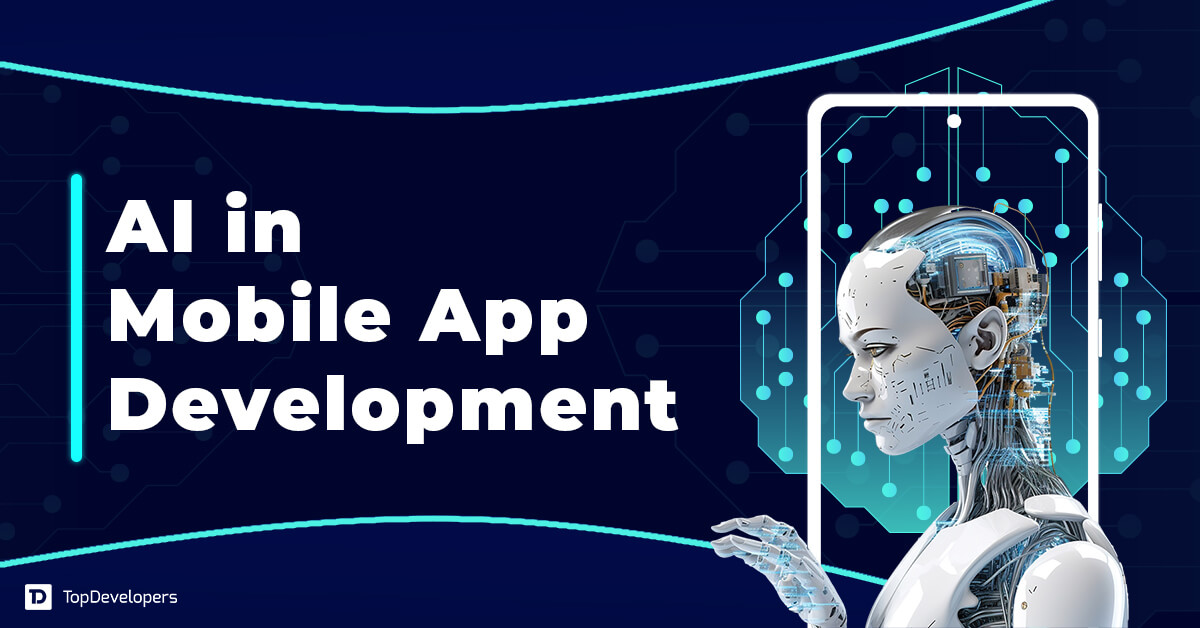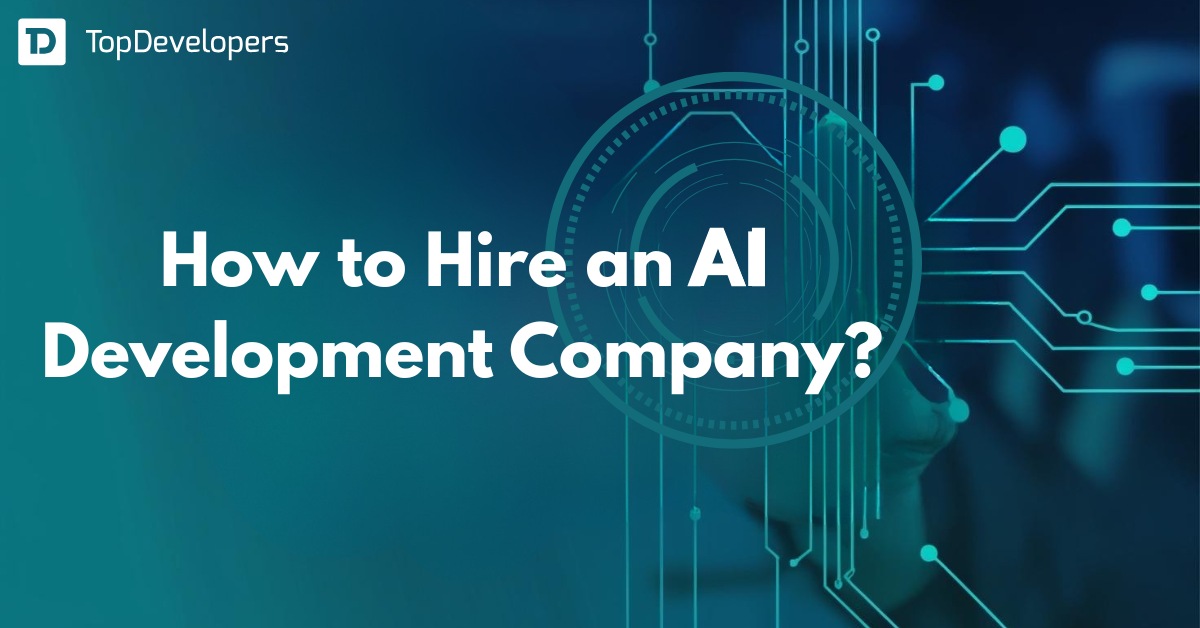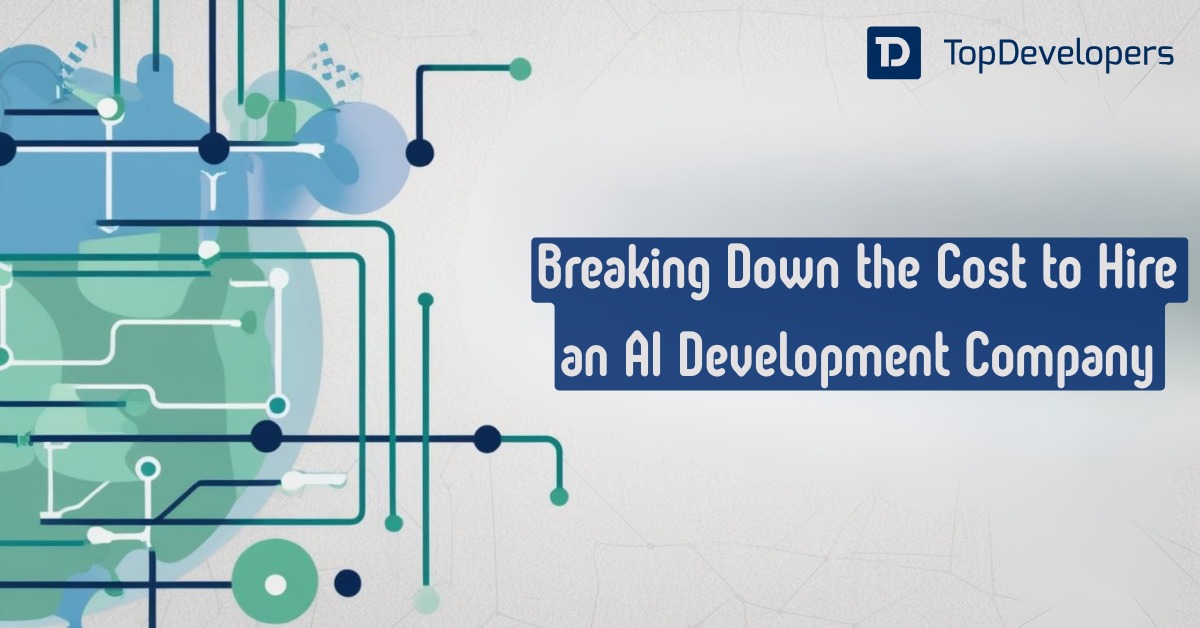
AI technologies are projected to contribute $15.7 trillion to the global economy by 2030. That’s more than the combined GDP of China and India today. But what makes AI so powerful? Why are businesses, governments, and researchers investing billions into artificial intelligence?
From self-driving cars and medical breakthroughs to personalized recommendations and fraud detection, AI technologies are revolutionizing industries at an unprecedented scale. These systems learn, adapt, and make decisions—pushing the boundaries of what machines can do.
What Are AI Technologies?
AI technologies encompass a wide range of innovations that enable machines to analyze data, recognize patterns, and make decisions—often with human-like intelligence. These include:
- Machine Learning (ML): AI that improves through experience
- Natural Language Processing (NLP): AI that understands and processes human language
- Computer Vision: AI that interprets images and videos
- Generative AI: AI that creates new content, from text to images
From healthcare and finance to manufacturing and cybersecurity, AI is transforming the way businesses operate and how people interact with technology.
What You’ll Learn in This Guide
This blog will cover:
- Types of AI Technologies: From machine learning to generative AI
- Real-World Applications: How AI is reshaping industries
- Challenges & Ethical Considerations: The risks and ethical concerns of AI
- Future Trends: What’s next in AI innovation?
- Best Practices for Businesses: How to leverage AI effectively
By the end of this guide, you’ll have a clear understanding of AI technologies, their impact, and how they are shaping the future.
Table of Contents
- What is AI Technology?
- Types of AI Technologies
- Challenges & Ethical Considerations in AI Development
- Future Trends in AI Technologies
- AI & Quantum Computing – The Next Leap in AI Power
- AI & Edge Computing – Faster, Smarter AI with On-Device Processing
- Advancements in AGI (Artificial General Intelligence) – The Road to Superintelligent AI
- Self-Learning AI Models – AI That Teaches Itself
- AI & 6G Technology – The Future of Ultra-Fast AI-Powered Connectivity
- Best Practices for Businesses Implementing AI
What is AI Technology?
Artificial Intelligence (AI) technology refers to computer systems that can perform tasks requiring human intelligence—such as learning, reasoning, problem-solving, perception, and decision-making. These systems process vast amounts of data, identify patterns, and continuously improve their performance.
Unlike traditional software that follows predefined rules, AI models learn from experience and adapt based on new data. This ability makes AI essential for industries ranging from healthcare and finance to retail and cybersecurity.
Brief History & Evolution of AI
AI’s roots trace back to the 1950s, but major breakthroughs in recent decades have pushed its development forward. Let’s look at some key milestones:
- 1950 – Alan Turing’s AI Concept: Alan Turing proposed the Turing Test, a benchmark to determine if a machine can exhibit human-like intelligence.
- 1956 – The Birth of AI: The term Artificial Intelligence was coined at the Dartmouth Conference, marking the beginning of AI as a formal research field.
- 1980s – Rise of Machine Learning: AI shifted from rule-based programming to machine learning (ML), allowing systems to learn from data rather than relying on hard-coded rules.
- 1997 – AI Beats Human in Chess: IBM’s Deep Blue defeated world chess champion Garry Kasparov, proving AI’s potential in strategic thinking.
- 2011 – AI in Conversational Intelligence: IBM Watson won Jeopardy!, showcasing AI’s ability to process natural language and respond intelligently.
- 2016 – AI Dominates Go Game: Google DeepMind’s AlphaGo defeated a human world champion in Go, a game considered exponentially more complex than chess.
- 2023 – The Rise of Generative AI: AI models like ChatGPT and DALL-E demonstrated AI’s ability to generate human-like text, images, and even music, revolutionizing content creation and automation.
AI technology continues to evolve rapidly, pushing boundaries in automation, decision-making, and creativity.
Types of AI Technologies
AI is a vast and evolving field, powered by a diverse set of technologies that enable learning, reasoning, perception, and creativity. These technologies form the foundation of automation, predictive analytics, and intelligent decision-making, transforming industries worldwide. The robust AI tech stack, combining machine learning, deep learning, and natural language processing, plays a key role in enabling these advancements and driving innovation across various sectors. Let’s explore the core AI technologies driving innovation and their real-world applications.
Machine Learning (ML) – Learning from Data
Machine Learning (ML) is the backbone of AI. It enables computers to analyze data, recognize patterns, and make predictions without explicit programming. ML models improve over time, becoming more accurate as they process more data.
Types of Machine Learning
- Supervised Learning: AI is trained using labeled data. Example: Email spam detection (AI learns to distinguish spam from legitimate emails).
- Unsupervised Learning: AI finds patterns in unlabeled data. Example: Customer segmentation (AI groups shoppers based on purchasing behavior).
- Reinforcement Learning: AI learns through trial and error, receiving rewards for correct actions. Example: AI-powered trading bots optimizing stock market strategies.
Real-World Examples:
- Netflix & Amazon Recommendations: ML suggests movies and products based on past behavior.
- Fraud Detection in Banking: AI identifies suspicious transactions to prevent fraud.
Deep Learning – The Brain Behind AI
Deep Learning is a subset of machine learning that uses multi-layered neural networks to process complex data. It mimics the way the human brain processes information, making it highly effective for tasks like speech and image recognition.
How Deep Learning Works
- Input Layer: Receives raw data (e.g., a spoken phrase).
- Hidden Layers: Extracts features (e.g., recognizing speech tones).
- Output Layer: Delivers results (e.g., converting speech to text).
Real-World Examples:
- Speech Recognition (Siri, Alexa, Google Assistant): Converts voice into text.
- Medical Imaging (AI-Powered Diagnostics): Detects diseases from X-rays and MRIs.
Natural Language Processing (NLP) – AI That Understands Humans
Natural Language Processing (NLP) allows AI to comprehend, interpret, and generate human language. This enables machines to communicate effectively, respond to queries, and even generate written content.
What NLP Powers
- Text Analysis & Summarization: AI extracts key insights from documents.
- Sentiment Analysis: AI detects emotions in customer reviews and social media posts.
- Machine Translation: AI translates languages in real time (e.g., Google Translate).
Real-World Examples:
- Chatbots & Virtual Assistants: AI-powered customer support (e.g., ChatGPT, Zendesk bots).
- Sentiment Analysis in Marketing: AI evaluates customer feedback to improve products.
Computer Vision – AI That Sees & Understands Images
Computer Vision enables AI to analyze, interpret, and understand visual content—whether it’s a photo, video, or live camera feed. It mimics human vision, making it useful for automation, security, and creative applications.
How Computer Vision Works
- Object Recognition: AI identifies objects in images (e.g., recognizing a cat vs. a dog).
- Facial Recognition: AI detects and verifies human faces (e.g., Face ID on iPhones).
- Autonomous Navigation: AI helps self-driving cars recognize roads, pedestrians, and obstacles.
Real-World Examples:
- Self-Driving Cars (Tesla Autopilot, Waymo): AI analyzes traffic and road conditions.
- Medical Imaging (AI in Radiology): AI detects tumors in CT scans.
Reinforcement Learning – AI That Learns by Doing
Reinforcement Learning (RL) is a self-learning AI model that interacts with an environment, takes actions, and receives rewards for correct decisions. Over time, the AI improves by maximizing rewards and minimizing mistakes.
How Reinforcement Learning Works
- AI Agent: AI Agent help make decisions.
- Environment: The world in which the AI operates (e.g., a game, a robot).
- Rewards: Positive feedback when AI makes the right decision.
Real-World Examples:
- Gaming AI (AlphaGo, DeepMind): AI mastering complex games like Chess and Go.
- Robotic Process Automation (RPA): AI-powered robots learning to perform manufacturing tasks.
Generative AI – AI That Creates Content
Generative AI is one of the most exciting advancements in AI. Unlike traditional AI that analyzes and classifies data, Generative AI can create original content, including text, images, music, and even videos.
How Generative AI Works
- Trained on Massive Datasets: AI learns patterns from existing content.
- Uses Neural Networks: AI generates new, unique outputs.
- It can be used in various creative fields, such as writing, art, music, and even software code.
Real-World Examples:
- GPT Models (ChatGPT, Bard): AI-generated text for writing, coding, and customer service.
- DALL E & MidJourney: AI-generated art and images.
- Music Generation AI: AI-powered music composers creating original soundtracks.
Find out in our detailed DeepSeek vs ChatGPT analysis.
Challenges & Ethical Considerations in AI Development
AI is revolutionizing industries, but it comes with significant ethical and practical challenges. From bias and transparency to job displacement and privacy concerns, addressing these issues is crucial for the responsible development and deployment of AI technologies.
Bias & Fairness Issues – Can AI Be Truly Unbiased?
AI systems learn from data, and if that data contains biases, the AI will replicate and even amplify them. This can lead to discriminatory outcomes in fields like hiring, criminal justice, and lending.
Real-World Examples of AI Bias
- Hiring Discrimination: Amazon’s AI recruiting tool was found to favor male candidates over female applicants due to historical hiring biases.
- Criminal Justice Bias: AI risk assessment tools used in U.S. courts disproportionately classified Black defendants as high-risk, even when they had similar criminal records to White defendants.
- Loan & Credit Scoring Issues: Some AI-driven credit approval systems denied loans to minority applicants based on biased financial data.
How to Address Bias in AI
- Diverse & Representative Training Data: Use datasets that reflect real-world diversity.
- Bias Audits & Testing: Regularly test AI models for discriminatory patterns.
- Explainable AI (XAI): Ensure transparency in decision-making processes.
AI should enhance fairness, not reinforce human prejudices. Developers must continuously refine AI models to minimize bias and promote inclusivity.
Data Privacy Concerns – Who Controls Your Data?
AI relies on massive amounts of personal and sensitive data to function effectively. This raises concerns about user privacy, data security, and potential misuse.
Key Privacy Risks in AI
- Unauthorized Data Collection: AI models collect personal data from users, often without explicit consent.
- Data Breaches and Cybersecurity Threats: AI-driven systems can be vulnerable to hacking, leading to leaks of sensitive information.
- Facial Recognition & Surveillance: Governments and private firms use AI for surveillance, raising ethical concerns about civil liberties.
Legal Regulations Protecting User Data
- GDPR (General Data Protection Regulation): Europe’s strict privacy law ensuring data protection and user consent.
- CCPA (California Consumer Privacy Act): U.S. law allowing consumers to control how companies use their personal data.
- AI Ethics Guidelines by Big Tech: Companies like Google, Microsoft, and IBM have established ethical AI frameworks.
How to Improve AI Privacy Practices
- Data Anonymization: Remove identifiable information from datasets.
- User Consent & Transparency: Inform users about how their data is collected and used.
- Stronger Cybersecurity Measures: Encrypt sensitive AI-driven databases.
Balancing AI innovation and privacy protection is key to gaining public trust and ensuring ethical AI use.
AI Transparency & Explainability – Can We Trust AI Decisions?
One of the biggest challenges in AI development is the “black box” problem—where AI makes decisions that even AI developers can’t fully explain.
Why AI Transparency Matters
- Trust & Accountability: Users need to understand why an AI system made a particular decision.
- Regulatory Compliance: Laws like GDPR require explainability in AI-driven decision-making.
- Error & Bias Detection: Transparent AI models make it easier to identify and correct mistakes.
Real-World AI Transparency Issues
Healthcare AI Decisions: Some AI models predict diseases but can’t explain why a particular diagnosis was made.
Financial AI Models: AI credit scoring systems often reject applications without providing clear reasons, frustrating customers.
Self-Driving Car Accidents: When Tesla’s autopilot crashed, investigators struggled to understand the AI’s decision-making process.
Solutions for AI Transparency & Explainability
- Explainable AI (XAI): Develop AI models that provide human-readable explanations for their decisions.
- AI Audit Trails: Keep logs of how AI reaches conclusions.
- Open-Source AI Development: Encourage transparency by making AI algorithms publicly available.
The future of AI holds immense promise, driven by its potential to be transparent and accountable. As AI systems become more explainable, users and businesses will gain greater trust in AI-driven solutions, unlocking new opportunities for innovation, efficiency, and growth.
Job Displacement & Workforce Impact – Will AI Take Our Jobs?
AI automation is reshaping the workforce, eliminating some jobs while creating new opportunities. However, the transition raises concerns about job losses and economic inequality.
Industries Most Affected by AI Automation
- Manufacturing: AI-powered robots are replacing manual labor in factories.
- Customer Service: AI chatbots are handling customer interactions, reducing the need for human agents.
- Finance & Accounting: AI automates fraud detection and financial reporting, reducing human workload.
Will AI Create More Jobs Than It Replaces?
- AI is Eliminating Repetitive Jobs: Routine tasks are being automated (e.g., data entry, scheduling).
- AI is Creating New Job Roles: AI engineers, data scientists, and AI ethics specialists are in high demand.
- Workers Need Reskilling & Upskilling: The workforce must adapt by learning AI-related skills.
How to Prepare for the AI-Driven Job Market
- Invest in AI & Digital Skills: Workers should learn AI, machine learning, and data analytics.
- Government & Corporate AI Training Programs: Companies must retrain employees for emerging AI roles.
- Human-AI Collaboration: Instead of replacing workers, AI should assist and enhance productivity.
AI will transform jobs, not just eliminate them. Businesses and governments must ensure that workers adapt and thrive in the AI economy.
Future Trends in AI Technologies
AI is evolving at an unprecedented pace, unlocking new possibilities across industries. From quantum computing breakthroughs to self-learning AI models, these emerging AI trends will define the next generation of artificial intelligence. Let’s explore the most exciting advancements shaping the future of AI.
AI & Quantum Computing – The Next Leap in AI Power
Quantum computing and AI are a game-changing combination. While traditional computers process data in binary (0s and 1s), quantum computers use quantum bits (qubits), allowing them to perform complex calculations exponentially faster.
How Quantum AI Will Revolutionize Industries
- Drug Discovery & Healthcare: Quantum AI can analyze molecular structures in minutes, accelerating drug development and disease treatment.
- Financial Modeling: AI-powered quantum systems can predict stock market trends with far greater accuracy.
- Climate & Weather Predictions: Quantum AI can process climate models in real-time, enhancing weather forecasting.
- Cybersecurity & Cryptography: Quantum encryption will make data nearly impossible to hack.
Example: Google’s Quantum AI Lab demonstrated quantum supremacy, solving calculations in seconds that would take traditional computers 10,000 years.
Quantum AI is still in its early stages, but it holds the potential to redefine AI’s capabilities—making AI smarter, faster, and more efficient.
AI & Edge Computing – Faster, Smarter AI with On-Device Processing
Traditional AI relies on cloud computing, where data is sent to remote servers for processing. Edge AI, on the other hand, processes data locally on devices, reducing latency and improving speed.
Why AI & Edge Computing Matter
- Faster AI Processing: AI models run in real-time without relying on cloud servers.
- Reduced Latency for Smart Devices: Critical for autonomous vehicles, IoT devices, and robotics.
- Enhanced Data Privacy: Sensitive data is processed on-device rather than sent to external servers.
Real-World Applications:
- Self-Driving Cars: AI-powered vehicles process sensor data instantly for real-time decision-making.
- Smartphones & Wearables: AI runs on devices like Apple’s Neural Engine, enabling faster facial recognition and AI-powered photography.
- Smart Factories: Edge AI monitors machinery performance and detects failures before they happen.
As AI models become lighter and more efficient, Edge AI will enable instant, intelligent decision-making without relying on cloud connectivity.
Advancements in AGI (Artificial General Intelligence) – The Road to Superintelligent AI
Today’s AI, known as Artificial Narrow Intelligence (ANI), specializes in specific tasks (e.g., chatbots, image recognition). However, the future lies in Artificial General Intelligence (AGI)—AI that can think, reason, and learn like a human across multiple domains.
What Makes AGI Different?
- Human-Like Cognitive Abilities: AGI can perform a broad range of tasks, from creative writing to scientific research.
- Self-Learning & Adaptation: AGI doesn’t require retraining; it continuously learns and evolves.
- Decision-Making with Reasoning: Unlike current AI, AGI understands context and consequences, making it more reliable for complex decisions.
Example: OpenAI’s GPT-4 and Google DeepMind’s AlphaCode are early steps toward AGI, demonstrating reasoning and creative problem-solving abilities.
While AGI is still in development, the next decade could see breakthroughs that bring AI closer to human-level intelligence—with major implications for society, ethics, and the workforce.
Self-Learning AI Models – AI That Teaches Itself
Traditional AI models require extensive human training, but next-gen AI models will learn and improve autonomously. These self-learning AI models can analyze new data and refine their understanding without human intervention.
How Self-Learning AI Works
- AutoML (Automated Machine Learning): AI trains itself to optimize performance.
- Self-Supervised Learning: AI learns from unlabeled data, mimicking human cognitive learning.
- Continuous Learning AI: AI adapts in real-time, making it more accurate over time.
Real-World Examples:
- Tesla’s Autopilot AI: Continuously improves based on driving data from millions of vehicles.
- Google’s DeepMind AlphaZero: AI mastered chess and Go without human input, learning through self-play.
- AI-Powered Cybersecurity: AI learns to detect new cyber threats without being explicitly trained on them.
Self-learning AI reduces dependency on human programmers, making AI systems smarter, more adaptable, and capable of handling dynamic challenges.
AI & 6G Technology – The Future of Ultra-Fast AI-Powered Connectivity
5G is still being rolled out globally, but researchers are already working on 6G, which will bring unprecedented speed, low latency, and AI-powered automation.
How AI & 6G Will Transform the Digital World
- Ultra-Fast AI Processing: AI models will process data at speeds 100 times faster than today.
- Holographic & AR/VR Experiences: AI-driven 6G networks will power hyper-realistic virtual interactions.
- Fully Autonomous AI Systems: AI-powered smart cities, self-driving fleets, and IoT devices will communicate in real-time.
- AI-Driven Healthcare Breakthroughs: Remote surgeries, real-time patient monitoring, and AI diagnostics will become mainstream.
Example: Samsung and Huawei are investing in AI-driven 6G research, aiming for a 2030 rollout that will redefine global connectivity.
6G will be the backbone of next-generation AI, enabling instantaneous decision-making, seamless automation, and a hyper-connected world.
Best Practices for Businesses Implementing AI
AI is transforming businesses, but successful implementation requires a strategic approach. Businesses that rush into AI without a clear roadmap risk inefficiencies, biased outcomes, and compliance issues. To maximize AI’s potential, companies must align AI initiatives with business goals, ensure high-quality data, continuously monitor AI models, and maintain ethical AI practices.
Here’s how businesses can implement AI effectively.
Define Clear AI Objectives – Align AI with Business Goals
Before investing in AI, businesses must clearly define their objectives. AI should be a tool to solve real-world problems, not just a buzzword for innovation.
Key Steps to Set AI Objectives:
- Identify Business Challenges: What problems can AI solve? (e.g., customer service automation, fraud detection, predictive analytics)
- Set Measurable Goals: Define success metrics (e.g., improve sales forecasting accuracy by 20%).
- Align AI with Company Strategy: Ensure AI initiatives support business growth, efficiency, and customer satisfaction.
Example: A retail company implementing AI for inventory management should define success as:
- Reducing stock shortages by 30%
- Cutting excess inventory costs by 25%
- Improving demand forecasting accuracy
Takeaway: AI should drive measurable business impact, not just be adopted for the sake of technology.
Ensure Data Quality – AI is Only as Good as Its Data
AI models depend on high-quality, unbiased, and well-structured data. Poor data leads to inaccurate predictions, biased decisions, and failed AI implementations.
Key Steps for Data Quality
- Eliminate Data Biases: Ensure AI is trained on diverse and representative datasets.
- Use Clean & Structured Data: Remove duplicate, irrelevant, or incomplete data.
- Implement Real-Time Data Updates: AI models should be trained on the latest information.
Example: A bank using AI for loan approvals must ensure its dataset includes applicants from diverse income groups, genders, and ethnicities to avoid biased lending decisions.
Takeaway: AI is only as smart as the data it’s trained on—prioritize data accuracy, diversity, and relevance.
Continuous AI Monitoring & Optimization – Avoid Model Drift
AI models don’t remain accurate forever. Over time, as market conditions and customer behavior evolve, AI models can degrade in performance, a problem known as model drift.
How to Maintain AI Accuracy:
- Regular Model Updates: AI models must be retrained with new, relevant data.
- Performance Monitoring: Use AI monitoring tools to track model accuracy and decision outcomes.
- Human-in-the-Loop Approach: Ensure humans oversee AI decisions, especially in high-stakes industries like healthcare and finance.
Example: A fraud detection AI in banking must continuously adapt to new fraud tactics. If not updated, cybercriminals may bypass outdated fraud detection models.
Takeaway: AI models require ongoing maintenance—continuous monitoring ensures reliability and accuracy.
Ethical AI Implementation – Build Trust & Avoid Biases
AI must be transparent, fair, and accountable. Ethical concerns, such as AI bias, lack of transparency, and privacy risks, can harm brand reputation and lead to legal consequences.
How to Ensure Ethical AI Practices:
- Bias Audits & Fairness Testing: Regularly test AI models for unintended biases.
- Explainable AI (XAI): Ensure AI decisions are interpretable and justifiable.
- Comply with AI Regulations: Follow GDPR, CCPA, and ethical AI guidelines.
Example: A recruitment AI screening resumes should be audited to ensure it does not favor one gender, ethnicity, or background over another.
Takeaway: AI should enhance fairness and transparency, not reinforce human biases.
Conclusion
AI technologies are revolutionizing industries by enabling smarter decision-making, automation, and innovation. From machine learning and deep learning to generative AI and computer vision, these advancements are transforming healthcare, finance, manufacturing, and cybersecurity, making businesses more efficient and data-driven.
However, AI adoption comes with challenges, including bias, data privacy concerns, and workforce disruption. To ensure responsible AI implementation, businesses must align AI with clear objectives, maintain high-quality data, continuously monitor models, and follow ethical AI practices to build trust and transparency.
As AI continues to evolve, trends like quantum computing, self-learning AI, and edge computing will drive the next wave of technological breakthroughs. Companies that strategically integrate AI into their operations will gain a competitive advantage, while those that fail to adapt risk being left behind. Many top AI development companies are leading the charge in pushing the boundaries of what AI can achieve, helping businesses stay ahead in an increasingly digital world.
 Gillian Harper
| Feb 6, 2025
Gillian Harper
| Feb 6, 2025
A professionally engaged blogger, an entertainer, dancer, tech critic, movie buff and a quick learner with an impressive personality! I work as a Senior Process Specialist at Topdevelopers.co as I can readily solve business problems by analyzing the overall process. I’m also good at building a better rapport with people!


